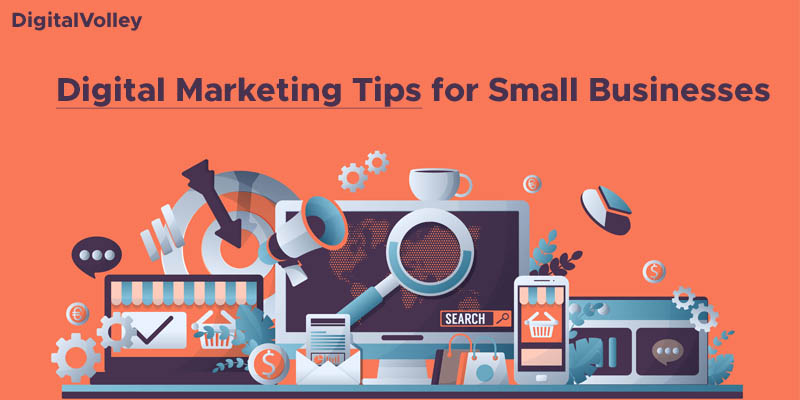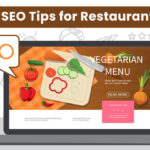
Digital marketing is a powerful way to attract new customers for small businesses. It gives you access to audiences that would otherwise be out of reach and can help you grow your business by getting your name in front of potential customers. Digital marketing takes time, effort, and money to get results. If you’re considering investing in digital marketing for your small business, here are some strategies:
10+ Powerful Digital Marketing Tips for Small Businesses

In today’s digital age, having a strong online presence is crucial for small businesses looking to grow and attract new customers. There are a variety of Tips that can help boost your small business’s visibility and success. In this guide, we’ll provide Strategies and Tips for small businesses looking to take your digital marketing efforts to the next level.
1. Understand your audience
Your audience is the lifeblood of your business. Without an engaged, loyal customer base, you’re sunk. So it makes sense to do everything in your power to understand them.
You can start by asking yourself some questions:
- What do my customers need? What do they want from me?
- How are they finding me now? If they aren’t already aware of my brand, how can I reach them in a way that will encourage them to engage with me?
- Why are they buying from me and what do they like about my products or services?
2. Be strategic about SEO
Search Engine Optimization is a long-term strategy, not a one-off event.
SEO is not just about keywords – it’s about understanding your audience and how they interact with you in the digital world.
SEO is the foundation of digital marketing, so if you want to be successful in this area, it’s important that you understand its basics before diving into more advanced tactics like social media advertising or paid search ads on Facebook Ads or Google Ads. An SEO Expert can help you optimize your website and content for search engines, conduct keyword research and make an SEO strategy for higher on Google and get more traffic.
3. Get on social media
Social media is a great way to connect with your customers and get feedback on your products and services. It’s also a great way to create brand awareness, build trust with your customers, and promote sales.
The most popular social media platforms are Facebook, Instagram, Twitter, LinkedIn, and Pinterest. These free platforms allow you to communicate with people interested in what you offer in real-time. You can share photos or videos with them (if they’re interested), ask questions about their needs (to help improve the product), and give tips on how they can use it more effectively (for example: “Clean out the car vents once every six months”), tell them where it’s available locally (“Hey! We’ve got this at our store.”)
4. Connect with your audience.
If a customer has a question, answer it. If they want to share their opinion, respond. If they have a complaint, address it.
This is the easiest way to build trust with your audience and establish yourself as an authority in your industry. It’s also one of the most effective ways of building up relationships with your customers so that when they need help or advice—and let’s be real here: who doesn’t need help sometimes?—you’re there ready to lend them yours.”
5. Tailor your content to your audience.
The best way to ensure that your content is reaching the right people is by knowing exactly who you’re talking to, what they want and need, and then customizing your message accordingly. This means taking time to understand their pain points and interests so that you can speak on those levels effectively. You should also consider the language you use—it’s important not only for conveying meaning but also for making sure that those who aren’t familiar with jargon or industry-specific terms have access to it as well.
Finally, make sure that all of your materials are relevant! While it may be tempting (and easier), just going with whatever feels good at the moment, remember: if it doesn’t serve a purpose or solve an existing problem for someone else out there in digital land, then there will be no reason for them go anywhere else except right back where they started when searching again later on down this same path just looking for something better instead!
6. Create a content calendar to keep you on track.
A content calendar is a great tool for keeping you on track and organized. You can use it to plan out posts, campaigns, and other social media activities and make sure no content is missed.
Use this simple spreadsheet template to create your own version of the calendar. It’s important to include as much information as possible: when each campaign or post will be published; who’s involved in creating/editing/posting the content; what type of content will be published when; and where it will be posted online (blog, Facebook page or LinkedIn profile).
7. Automate as much as you can.
It’s important that you automate as much of your digital marketing as possible. That way, it will cost less time and money for you to keep up with the latest trends in your industry, as well as stay relevant to your audience. Automate your social media posts and email marketing by using tools such as Buffer or Hootsuite.
If you’re creating content regularly (whether it’s blog posts, podcasts, or videos), then automation will help make sure that people don’t forget about them after they’ve gone live!
8. Make analytics a priority.
The secret to success in digital marketing is knowing your audience. You may think you know your target market, but you could be missing out on potential customers. Analytics is one of the most useful tools to understand what your audience wants and needs. Hence, making analytics a priority for your business’s online presence is important.
You can start by creating an account with Google Analytics or another similar service provider. They’ll offer several different packages depending on your needs—the “Standard” package is usually sufficient for small businesses starting out with this kind of thing—but do note that there is no free option here!
9. Be personal and authentic.
When it comes to creating content, it’s important to be yourself and write in your own voice. Rather than trying to create a branded tone that doesn’t feel like you or your business, use your own experiences as the basis for your posts and articles.
Think about what makes you unique — what do you have that others don’t? How can you share those things with people? Make sure every post has a point of view, even if it’s just an opinion on what happened today at work or how someone else did something differently than you would have done it in their shoes.
You want to create a community online rather than just build up a following by posting the same thing over and over again as many companies do on social media channels like Facebook and Instagram. People want substance; they want conversation! If all of your posts are nothing but links back to sales pages, no one will want anything else from you except those same sales pages (and maybe some positive reviews).
If instead, half of them are links back but half are written content with the personality behind them (perhaps even including humor), then potential customers will know there are real humans behind this brand—and who doesn’t love connecting with other humans?
10. Create shareable content.
This is a no-brainer, but it must be said: the best way to promote your brand and get people talking about it is by creating content that will inspire them to tell their friends and family. Content should be relevant, unique, and interesting enough that people want to share it on social media platforms. It should also be visually appealing so that when people do decide to share it online, they’ll be able to capture their audience’s attention from the first glance at their profile picture or cover image.
11. Create a plan and stick to it.
Before you can think about setting goals for your small business, you have to identify the problem. If you have a small business that’s struggling or not doing as well as it could be, then chances are there’s a problem somewhere in one of these three categories:
- The product or service needs improvement.
- The marketing strategy needs improvement.
- Your approach to sales and marketing is flawed.
The first thing to do when trying to figure out how to improve your sales and marketing efforts is to define the goal of each campaign before beginning—for example: “I want 50 more leads from my Facebook ad this month.” Be sure that the goal isn’t so vague (like “I want more customers.”) because those types of goals are hard enough for large companies with dedicated teams who know exactly where they’re going at all times; for smaller businesses, who often don’t even have full-time staff members yet, it can be very difficult indeed!
If you put in the time and effort, digital marketing can be effective for small businesses, too.
Digital marketing is a great way to connect with your audience and grow your business. It’s not just for big companies anymore! If you are willing to put the time, effort, and money into creating quality content, you can have success with this strategy for your small business too.
FAQs:
A comprehensive digital marketing strategy typically includes search engine optimization (SEO), pay-per-click (PPC) advertising, social media marketing, content marketing, email marketing, and
analytics.
Content marketing involves creating valuable and relevant content to attract and engage your target audience. It can help improve your website’s SEO and establish your business as an authority in your industry.
Regularly review your analytics data to identify trends, measure performance, and make data-driven decisions









